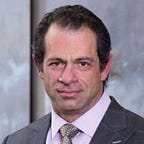The Lord of the Rings is arguably the most popular film trilogy of all time, with a combined box office gross exceeding $1 billion in the US and a $250 million streaming deal with Amazon.
Directed by Peter Jackson, the three films — The Fellowship of the Ring (2001), The Two Towers (2002), and The Return of the King (2003) — were shot from October 1999 to December 2000 in New Zealand. The epic fantasy adventure is based on J.R.R. Tolkien’s book of the same name and follows a hobbit and his companions in their efforts to save Middle Earth by destroying the powerful One Ring. Below are seven facts about the casting and production of the trilogy that reveal just how monumental of an effort it truly was.
Extensive Script Revisions
Although it ended up as a trilogy, that wasn’t always the intention, at least among its producers. The Lord of the Rings story was initially planned to be told through two films, but producers eventually wanted Jackson to condense it into a single film due in part to budgetary concerns. Attempts to do this featured script revisions that had Arwen, as opposed to Éowyn, kill the Witch-king in the Battle of Pelennor Fields, and Gondor and Rohan combined into a single kingdom. Miramax, which had distributing rights for The Lord of the Rings, even suggested the events in the trilogy be presented in one movie as a flashback told by an older Frodo.
Sean Connery as Gandalf?
One of the most memorable characters in the trilogy is Gandalf. The wizard protagonist was played by Oscar-nominated actor Sir Ian McKellen, but he wasn’t the only British actor considered for the role. Sean Connery, best known for playing James Bond, read for the role and even had a deal in place to receive 15 percent of the films’ income if he accepted the role. That would have accounted for around $450 million of its nearly $3 billion in worldwide ticket sales. Connery eventually turned down the role because he didn’t understand the script.
“I read the book. I read the script. I saw the movie. I still don’t understand it … I would be interested in doing something that I didn’t fully understand, but not for 18 months,” he explained during a 2005 interview in New Zealand.
Casting of Aragorn
The character of Aragorn was another that could have looked much different on screen if prior casting choices had worked out. Nicolas Cage was originally offered the role, but turned it down citing “family obligations.” Relatively unknown Irish actor Stuart Townsend was then cast in the role and trained and rehearsed for two months in New Zealand before being fired a day prior to filming. He was replaced by Viggo Mortensen. Russell Crowe was also considered.
Other Actors Considered for Roles
Vin Diesel, known for the Fast and Furious franchise, also auditioned for Aragorn, while Uma Thurman and Ethan Hawke were considered for the roles of Éowyn and Faramir, respectively. Liam Neeson was also offered and passed on the role of Boromir. Jake Gyllenhaal auditioned for the role of Frodo, eventually played by Elijah Wood, but wasn’t aware he needed a British accent. He later recalled being told he had one of the worst auditions for the trilogy.
Sean Bean’s Fear of Flying
Sean Bean played the role of Boromir in the trilogy, but his fear of flying made his work on set that much more difficult. Several scenes in The Fellowship of the Ring were shot in New Zealand’s mountainous regions and cast members were airlifted to these locations via helicopter. Bean, however, spent two hours every morning climbing the mountain in Boromir’s full costume.
Amount of Props
Although computer-generated imagery (CGI) was first used in film in 1973, it still wasn’t as commonly used in the late 1990s and early 2000s as it is today. One might imagine CGI was a major element in the production of The Lord of the Rings given its portrayal of Middle Earth still looks real and believable two decades later. However, much of this is owed to the props department. Great care and attention to detail went into crafting tens of thousands of practical effects including 10,000 prosthetic facial appliances, more than 3,500 pairs of hobbit feet, 1,200 suits of armor, and 10,000 arrows.
Only Fantasy Film to Win Best Picture
In addition to breaking box office records, The Lord of the Rings was also a critical success. Combined, the three films won 17 Oscars, 11 of which, including Best Picture, were awarded to The Return of the King. The third and final film in the trilogy was the first fantasy movie to win the Oscar for Best Picture. It also won Academy Awards for Best Director, Best Writing (Adapted Screenplay), Best Film Editing, Best Original Score, and Best Makeup. Interestingly enough, Jackson filmed an additional shot three weeks after The Return of the King won Best Picture. This scene appears in the extended edition of the film.
